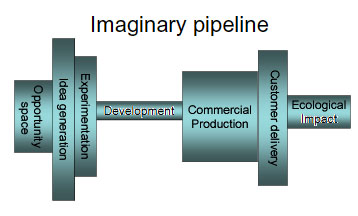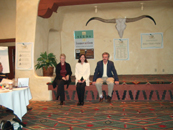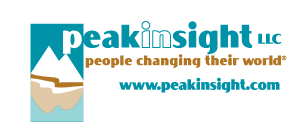Resources
Tools
Imaginary Pipeline
The imaginary pipeline is a diagnostic framework for assessing innovation. This simple representation shows organizational creativity flowing from left to right. In reality, innovation is a much more dynamic and interactive process. Innovations can begin anywhere in the pipeline. This visual example illustrates a narrowly defined opportunity space, followed by an area that encourages lots of ideas to be generated around a narrow opportunity focus. Experimentation is conducted around certain ideas by a variety of enthusiasts. In this example, development is restricted to investing in a few big bets. Commercial production engages many people in generating suggestions for quality improvement. The customer delivery area is gaining new insights from customers that will impact the creation of future products and services. This example shows ecological impact being dealt with after the fact, rather than being included as a design parameter.
Back to Top
Innovation Horizons� 360
This 360 feedback system is based on the following roles played by innovators and their teams:- Scout. Explore new frontiers to identify innovations and growth opportunities.
- Inquisitor: Pursue in-depth inquiries to discover unique answers.
- Networker: Cultivate personal relationships with key players to exchange significant information.
- Collaborator: Facilitate cross-functional participation to enrich diversity in problem solving.
- Catalyst: Engage in creative problem-solving that stimulates inventiveness in others.
- Prototyper: Experiment with new designs to test performance under different conditions.
- Builder: Drive process execution to create durable competitive advantage.
- Evangelist: Communicate a compelling case for innovation that inspires action and wins support.
- Challenger: Confront status quo thinking and take risks to bring about change.
- Advocate: Promote the need for innovation to add value for customers.
- Ecologist: Champion the need to eliminate waste and work toward sustainability.
- Cultivator: Focus on continuous learning and improvement to help the organization evolve.
Back to Top
Innovation Horizons� Coaching Modules
The coaching modules are based on the 12 roles played by innovators and their teams. Each module contains questions and exercises for coaches to use with participants. The Innovation Handbook will also be used as a resource. Contact Katherine at peakinsight.com for information about the next certification session for coaches.Back to Top
Innovation Handbook
The handbook contains development suggestions, reflective questions, and book recommendations to help innovators and their teams enhance their capabilities in each of the roles covered by the 360. Individual guides for each role are also available as PDFs.Back to Top
Kokoro Compass
This exercise in reflection contains 10 questions in each area of Kokoro (i.e., Heart, Mind, Spirit, and Will). Individuals can use these questions for personal meditation and journaling. Groups can use these questions to stimulate discussion. The questions can also be used for movement interpretation, where individuals and/or groups enact how these questions are being handled today and how they could be addressed in the future.Back to Top
Leadership Metabolics Inventory
This organizational inventory can be used to diagnose organizational leadership issues (and opportunities) in your company. Send email to Katherine at peakinsight.com for an appointment to discuss your needs.Back to Top
Peakinsight 360 for Change Agents
This 360 feedback system was developed from our research on successful organizational change. It is based on some common characteristics among executive change leaders and OD change agents:- Insight: Deeply understanding the current business situation as well as the global context in which they are operating
- Purpose: Pursuing vital organizational goals with a personal dedication and authenticity that attracts others
- Passion: Caring deeply about the business (including its customers, products, and people) and expressing that love
- Vision: Communicating a vision for the future that captures the hearts and minds of employees as well as customers
- Strategy: Creating a strategic mindset and roadmap to pursue in real time across internal and external boundaries
- People: Involving others in a shared agenda, gaining true commitment from employees and winning customer loyalty
- Change: Communicating with sincerity and fearlessly implementing a sound change process
Back to Top
ZEROpoly: The Eco Enaction Game
This board game can be played by 2-6 players. The goal is to play the game until someone achieves a business cluster that produces no waste. Progress is made by rolling the dice and receiving rewards (eco-credits) for smart decisions. These credits can be invested along with other money to buy services or other businesses. When ZEROpoly is played during a leadership development module, it is typically followed by a discussion of actions, questions, and game-playing behavior. Implications for choices and behavior at work are debriefed as well.The game involves:
- Analyzing waste streams
- Finding less wasteful alternatives for production (e.g., smaller components)
- Finding players who will pay for your waste outputs
- Trading resources and eco-credits with other players
- Building alliances with other players
- Getting loans
- Making decisions about how to proceed
- Drawing wild cards representing unforeseen events such as global disasters
Other Favorite Tools
Approaches
Appreciative Inquiry (a change process developed by Dr. David Cooperrider and others)
http://appreciativeinquiry.cwru.edu/
Being First � (a change process developed by Being First)
http://www.beingfirst.com/ Seeds of Innovation (an approach to innovation management plus assessment tools developed by Elaine Dundon and Dr. Alex Pattakos)
Seeds of Innovation (an approach to innovation management plus assessment tools developed by Elaine Dundon and Dr. Alex Pattakos)
http://www.seedsofinnovation.com/
Whole-Scale�;(a change process developed by Dannemiller Tyson Associates)
http://www.dannemillertyson.com/aboutws.php
Instruments
Benchmarks �;(an instrument developed by the Center for Creative Leadership)
http://www.ccl.org/leadership/assessments/benchOverview.aspx?pageId=36
KAI: Kirton Adaption-Innovation Inventory (an instrument developed by Dr. Michael Kirton and distributed through the KAI Centre)
http://www.kaicentre.com/
KEYS� to Creativity (an instrument developed by Dr. Teresa Amabile and distributed by the Center for Creative Leadership)
http://www.ccl.org/leadership/assessments/KEYSOverview.aspx?pageId=65
MBTI � (an instrument distributed by Consulting Psychologists Press/CPP)
http://www.cpp-db.com/products/mbti/index.asp
The PROFILOR ��(an instrument developed by Personnel Decisions International)
http://www.personneldecisions.com/
Back to Top
Change Tools from Being First, Inc.
World-Class Resources for Change Leaders and Consultants, including The Change Leader's Roadmap Methodology.
http://www.changeresources.com/
Additional free change resources are available on Being First, Inc.�website at:
http://www.beingfirst.com/resources/articles.htm

